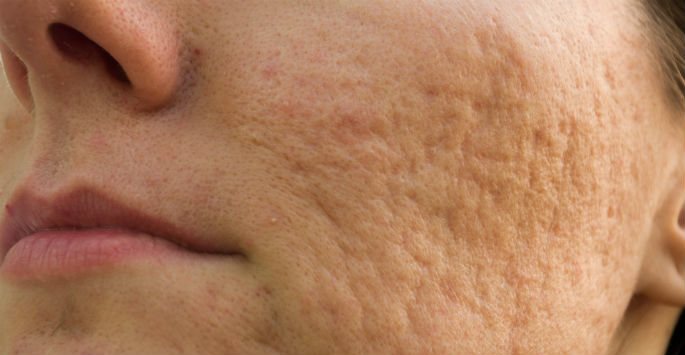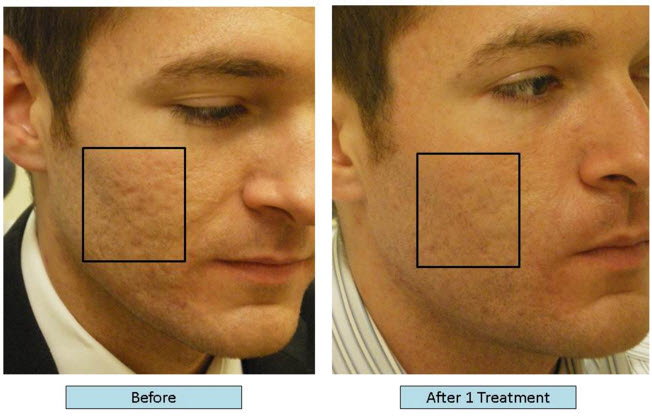How to Treat Acne Scars: Proven Methods for a Flawless Complexion
Checking Out Skin Disease: Identifying and Treating Acne Scars for Healthier Skin
Acne scars represent a significant issue for individuals looking for to preserve healthy and balanced skin, as they can impact both look and self-esteem. Recognizing the different kinds of scars, from atrophic to hypertrophic, is crucial for figuring out proper therapy alternatives. While professional interventions like chemical peels and microneedling can be efficient, the value of customized treatment plans can not be overemphasized. Preventative steps play a vital function in lessening future scarring. As we explore these elements, one need to consider just how the ideal method can cause transformative results.
Recognizing Acne Marks

The body's all-natural recovery procedure can result in either atrophic scars, which show up as depressions in the skin, or hypertrophic scars, which are increased and arise from overflow of collagen. In addition, the psychological toll of acne scars should not be underestimated; numerous individuals report sensations of shame, anxiousness, and lowered self-confidence. This psychological burden can impact social interactions and total lifestyle.
Resolving acne scars needs a comprehensive understanding of their development and impact. Recognition of the capacity for lasting repercussions connected with neglected scars can motivate people to look for proper treatments. Early intervention and reliable management approaches can considerably improve skin look and improve emotional strength, emphasizing the significance of understanding the intricacies surrounding acne scars.
Types of Acne Scars
Acne marks can be classified right into distinct types, each displaying special characteristics and requiring details therapy techniques. acne scars treatment. The main kinds of acne scars consist of atrophic, hypertrophic, and keloid scars

Hypertrophic marks, on the other hand, are raised over the skin degree and are the result of too much collagen manufacturing throughout the recovery procedure. They normally stay within the limits of the initial acne lesion. Keloid scars are similar yet extend past the initial injury website, developing bigger, raised areas that can be itchy or excruciating.
Understanding these kinds of scars is important for choosing suitable therapy choices. Different marks may react far better to details therapies, such as laser treatments, fillers, or surgical interventions, highlighting the significance of a tailored method to acne mark monitoring.
Identifying Your Scars
When evaluating the look of your skin, it is crucial to accurately determine the sort of scars existing, as this will notify one of the most effective treatment approach. Acne marks normally drop right into 2 classifications: atrophic and hypertrophic scars. Atrophic marks, which are one of the most usual, show up as anxieties or impressions on the skin. These can additionally be identified right into ice-pick marks, boxcar marks, and rolling scars, each displaying distinct attributes and calling for different techniques for analysis.
Hypertrophic scars, on the other Discover More hand, are raised and take place due to too much collagen production during the healing process. Recognizing the certain functions of your scars-- such as width, deepness, and appearance-- is important for correct recognition (skin rejuvenation treatments). Additionally, take into consideration the distribution of marks across your skin, as this can indicate the seriousness and duration of the acne condition
Involving with a dermatologist can give valuable insights right into the nature of your marks, helping in the distinction between numerous types. A thorough understanding of your marks will ultimately result in a more customized and effective treatment strategy, guaranteeing a more clear and healthier skin.
Therapy Alternatives Offered
Determining the specific kind of acne marks present on your skin prepares for exploring efficient treatment options. Usual sorts of acne marks include atrophic (clinically depressed), hypertrophic (raised), and post-inflammatory erythema.
For atrophic marks, options such as chemical peels, microneedling, and laser resurfacing are extensively used. Chemical peels use acids to remove the outer layer of skin, advertising new cell development.
Hypertrophic marks can be treated with corticosteroid injections to squash the scar or laser therapy to minimize redness and enhance look. Silicone gel sheets and pressure dressings may additionally assist look these up in handling elevated scars.
Furthermore, facial fillers can temporarily fill in depressions from atrophic scars, while medical excision may be appropriate for serious cases. Each therapy option has its benefits and factors to consider, making it important to speak with a skin specialist. They can give individualized referrals based upon the type and seriousness of your marks, along with your skin kind and overall health.
Tips for Prevention
Reliable prevention strategies can considerably minimize the probability of creating acne marks. The initial step is to maintain a consistent skincare regimen that consists of mild cleaning, peeling, and hydrating. Utilizing non-comedogenic items assists stop clogged up pores, which can aggravate acne. Additionally, including topical therapies having salicylic acid or benzoyl peroxide can effectively manage breakouts and decrease swelling.
Staying clear of need to stand out or select acne lesions is important, as this can result in deeper skin damage and increase the threat of scarring. Instead, consider making use of a chilly compress or over the counter treatments to lower swelling and inflammation.
Sun security is another essential element of prevention; ultraviolet (UV) rays can dim scars and prevent the recovery process. Using a broad-spectrum sunscreen with a minimum of SPF 30 daily can secure the skin and promote also healing.
Lastly, preserving a balanced diet regimen rich in minerals, vitamins, and anti-oxidants supports skin health and recovery. Staying moisturized and managing stress and anxiety levels can additionally play a substantial role in minimizing acne flare-ups. By carrying out these approaches, individuals can significantly lessen their possibilities of establishing acne marks.
Final Thought
In conclusion, understanding and determining acne scars is necessary for reliable treatment and achieving healthier skin. Different types of acne marks, consisting of hypertrophic and atrophic scars, require details interventions tailored to private demands.
The body's all-natural recovery process can result in either atrophic scars, which show up as clinical depressions in the skin, or hypertrophic scars, which are increased and result from overflow of collagen. They are additional divided into three subtypes: ice pick scars, boxcar scars, and rolling marks. Acne marks usually drop right into 2 Homepage groups: hypertrophic and atrophic marks. These can better be identified right into ice-pick marks, boxcar marks, and rolling marks, each displaying unique qualities and needing different methods for assessment.
Various types of acne marks, consisting of hypertrophic and atrophic marks, demand details interventions tailored to individual needs.